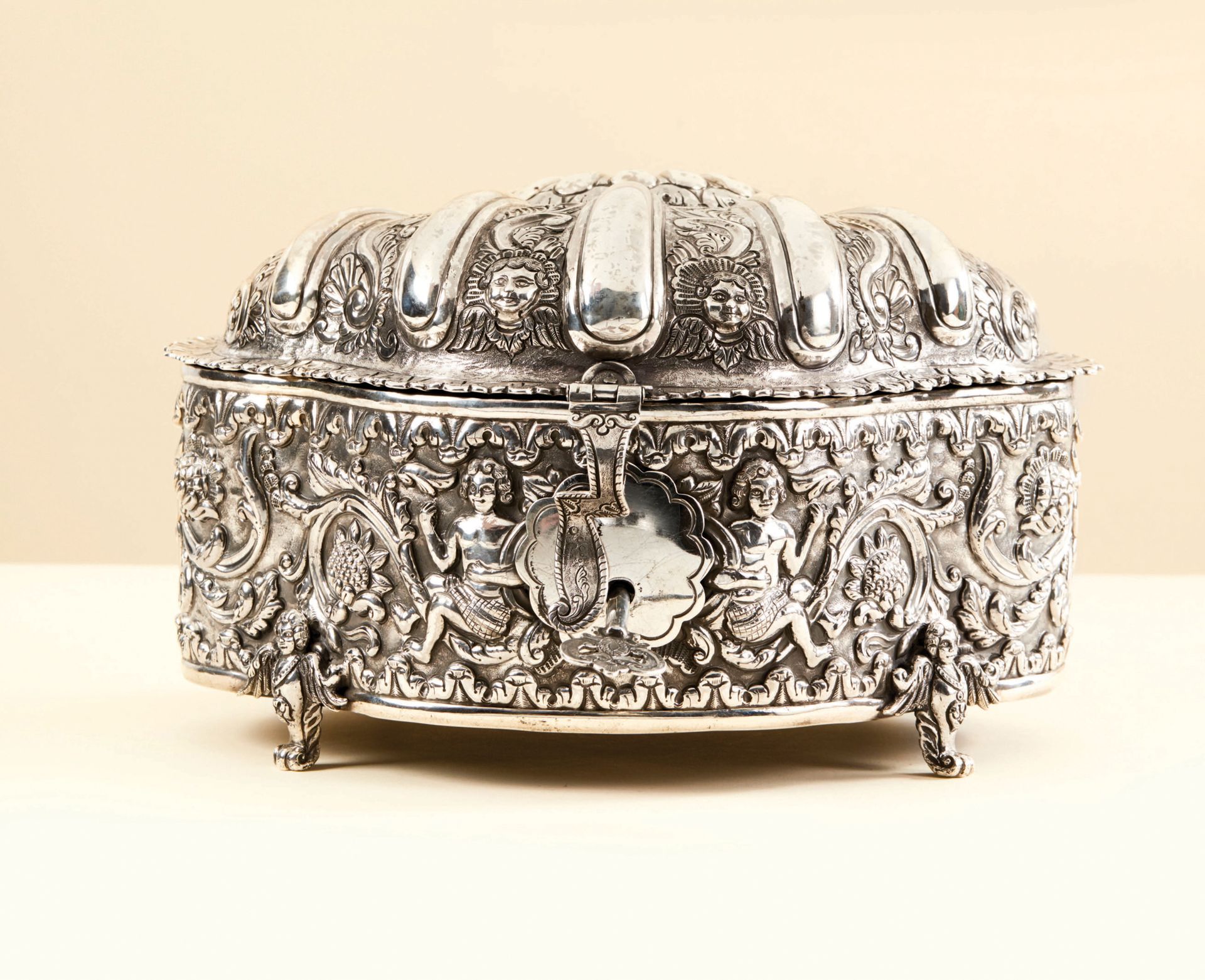Description
Important silver coca box, called coquera, embossed and engraved in high relief. The rim is decorated with children seated on foliage and flowers; friezes of leaves; the lid is in the form of a scallop shell with gadrooned ribs alternating with foliage, the bust of a winged angel at the top; the feet are in the form of busts of angels in sheaths. Hasp lock with key. Good quality. Hispanic colonies of South America, Bolivia, second quarter of the 18th century Height: 16 cm - Length: 28 cm - Depth: 22,5 cm - Weight: 2035 g These boxes with shell-shaped lids were intended for the conservation of coca leaves cultivated in Bolivia and consumed as far as Chile as well as the north of Peru and Argentina. Most often made of carved wood, the most luxurious boxes were made of silver as shown here. A very similar coquera from the Richard and Roberta Huber collection was acquired a few years ago by the Blanton Museum of Art in Austin (inv. no. 2018.287, fig.a). The Museum of Fine Arts, Boston, holds two ornamental plates of very similar workmanship attributed to a workshop located in the Jesuit missions of the Moxos or Chiquitos in Bolivia, in the former Upper Peru, and made in the years 1725-1750 (inv. no. 1992.346, fig.b)
86
Important silver coca box, called coquera, embossed and engraved in high relief. The rim is decorated with children seated on foliage and flowers; friezes of leaves; the lid is in the form of a scallop shell with gadrooned ribs alternating with foliage, the bust of a winged angel at the top; the feet are in the form of busts of angels in sheaths. Hasp lock with key. Good quality. Hispanic colonies of South America, Bolivia, second quarter of the 18th century Height: 16 cm - Length: 28 cm - Depth: 22,5 cm - Weight: 2035 g These boxes with shell-shaped lids were intended for the conservation of coca leaves cultivated in Bolivia and consumed as far as Chile as well as the north of Peru and Argentina. Most often made of carved wood, the most luxurious boxes were made of silver as shown here. A very similar coquera from the Richard and Roberta Huber collection was acquired a few years ago by the Blanton Museum of Art in Austin (inv. no. 2018.287, fig.a). The Museum of Fine Arts, Boston, holds two ornamental plates of very similar workmanship attributed to a workshop located in the Jesuit missions of the Moxos or Chiquitos in Bolivia, in the former Upper Peru, and made in the years 1725-1750 (inv. no. 1992.346, fig.b)
